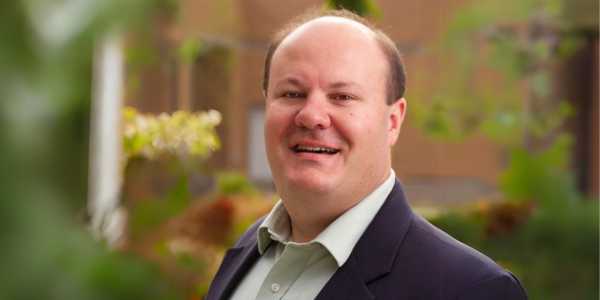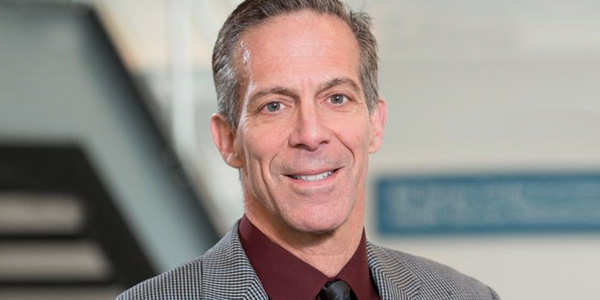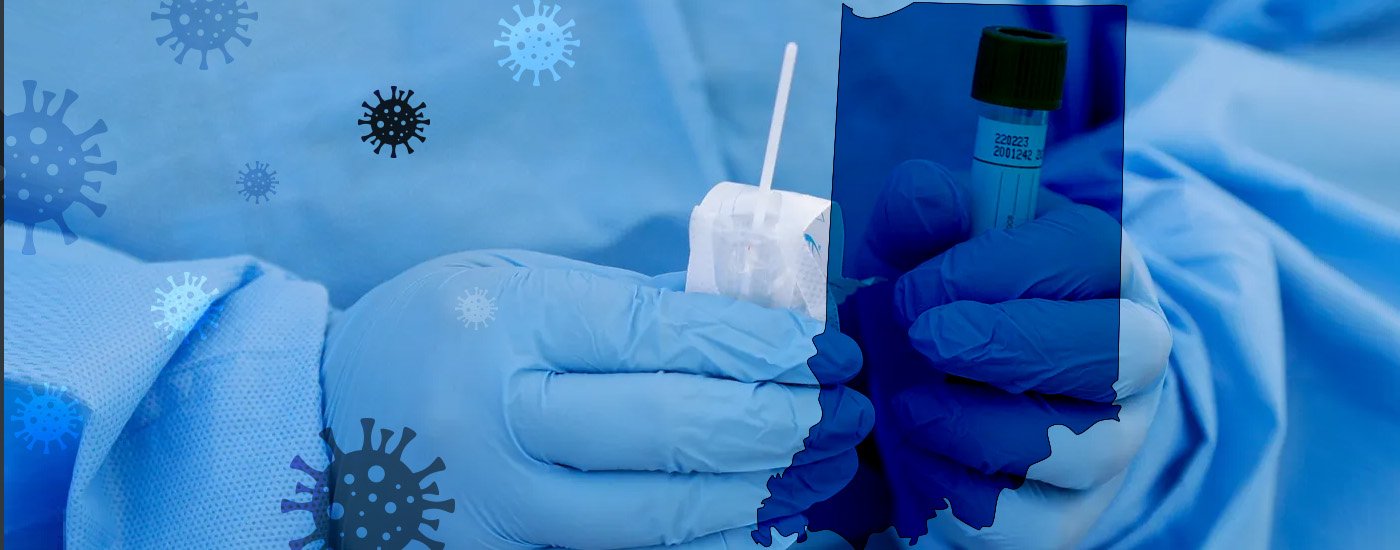Phil Lofton:
Think back to the earlier days of the pandemic. The times when testing was only for those who had serious symptoms.
There was a lot that we didn’t know about the spread of the virus
How many people in Indiana had had it?
How many who had it showed no symptoms?
What percentage of cases were being identified by testing? How many more did we not know about?
All of these pieces of information would help our state government and our health systems get a better understanding of the epidemiology of COVID-19, but that information doesn’t come from thin air.
This episode, we’ll learn about a study conducted by the Richard M. Fairbanks School of Public Health at IUPUI and the Indiana State Department of Health, led by Regenstrief research scientist Dr. Nir Menachemi.
Welcome to The Problem. I’m your host, Phil Lofton.
(Theme)
Phil:
Meet Dr. Nir Menachemi.
Nir Menachemi:
I am Professor and Department Chair of Health Policy and Management and a scientist that the Regenstrief Institute. And I’m at the IU Fairbanks School of Public Health and IUPUI.
Phil:
Back in May, Dr. Menachemi began an ambitious, long-term study, with the backing of the State Department of health to get a better understanding of the true spread of COVID-19 in Indiana.
Nir Menachemi:
So far, all the testing that has been going on before this study in Indiana has focused on people with a lot of symptoms. In other words, they were pretty sick or they were high risk. And so as a result, everything we know about people coming back positive are ultimately from the small sample of people who have been affected potentially the hardest by the, by the virus. What we don’t know is the larger number of people that might have been infected, but might have been mildly infected or maybe with no symptoms at all. And so this study is attempting to get an understanding of how many people that might be. We are shooting to get about 5 thousand people. If we get a little bit more than that, it’ll be great across the entire states. And people are being randomly selected in each of the ten districts of the states. An equal representation to the population and each of those districts.
Phil:
Listen to part of the Gubernatorial press conference where Dr. Menachemi’s study was announced, with State Health Commissioner Dr. Kristina Box and Dr. Menachemi himself.
Dr. Kristina Box:
Today I’m very pleased to announce that we have partnered with the IU Richard M. Fairbanks School of Public Health on a scientifically designed study that we’ll examine the prevalence of covert 19 among Hoosiers. This study will also give us better understanding of the extent to which individuals are showing antibodies that indicates signs of past infection. We believe, believe this data will better inform our plans to safely reopen our state and to determine what new normal mode of operation really looks like
Nir Menachemi:
Existing tests were purposefully focused on clinical or congregate settings to support clinical decisions affecting individual patients. Because these tests focused on sick and high-risk individuals, we lack an understanding of how many people in our state have been infected, especially if they were not formally tested or had no symptoms. This is where our work comes in. We will obtain scientifically valid results of the proportion of state residents that are currently infected, regardless of symptoms and those that may have already been infected with the virus based on antibodies. We will finally obtain an understanding of the true prevalence of COVID-19.
Phil:
Participants for this study were chosen to ensure they reflected the racial, ethnic and geographic demographics of the state’s population. This way, all of the participants didn’t end up coming from only Indianapolis and other cities, or being only white females, but were a true representation of the people who live in Indiana. Participation in the study is voluntary, and each person receives a nasal swab to check for active infection, and a blood draw for antibody testing. Within a few weeks, there were already some early findings that revealed that we were far less informed on the virus’s spread than we had originally thought.
Nir Menachemi:
Our data suggests that approximately 186 thousand Hoosiers were currently or previously infected by late April. At the same time, the state was aware of only about 17 thousand cumulative cases, not including deaths, suggesting that the true impact of the virus was almost 11 times greater than conventional testing had informed us.
Phil:
It’s worth pointing out just how ground-breaking this study has been, too. In May, when the study began, some experts such as Regenstrief Vice President for Faculty Development Dr. Aaron Carroll said that we were testing far less than we should have been. While some studies had been conducted using tests, none had been conducted with the power of a state department of health behind it. That backing allowed the study to recruit and test far more people in a much shorter window of time. This study is a model for other states on how to coordinate research between academia and state agencies to quickly build understanding of the spread of COVID in their states.
The study is still ongoing. There are a total of four scheduled phases, or waves, that will help Indiana track the spread of COVID, not just at individual points in time, but across the span of a year. In addition to understanding COVID’s spread just by numbers, however, we’ll also learn a lot about the populations that it impacts most heavily.
Nir Menachemi:
Every wave generates really useful information, but each additional wave adds to the usefulness of that new data. And so we will have good information from our current efforts. But we’ll also be able to see how the change in the prevalence of COVID it has occurred between waves.
Racial and ethnic minorities are disproportionately represented in essential jobs. This means that they are less able to engage in social distancing, less able to shelter in place, in part because their livelihood demands them to be out and about. On top of that, we know that these factors not only help us understand who’s going to be worse off, but also once they are with a diagnosis, who was going to be further worse off. But there’s the idea of prevention and making sure someone doesn’t get diabetes, for example. And we know that social determinants of health and the factors that influence those are extremely important. But we also know that once you get a diagnosis, how well you will fare with it, how fast the disease will progress to the point of being very serious, very severe, very expensive, very complicating is also a function of those social determinants of health. And so in many ways, the pandemic has done nothing except for highlight what we have already known and bring it to the forefront. If anything, it’s even more alarming now that an infectious disease is hitting the individuals most vulnerable. And it just seems to me, like in every other aspect pre-coded, we are only as strong as the most vulnerable among us to disease. And so we can improve the US healthcare system either by, you know, making the people who are best off, better off, or making the people who are worse off, significantly better off. And you can move the average if you imagine it, significantly easier and more cost effectively by helping the folks at the bottom of the Health distribution.
Nir Menachemi:
We know that in many of these ethnic and racial minority households, the family structure includes people beyond the nuclear family. So they might have an aunt or a grandma there. And so they are living with a larger family structure. And so on top of that, to the extent that these folks are also low income, they’re living in smaller quarters. And so when you have lots of people living in small congregate settings and someone is being disproportionately exposed, that’s going to make everyone in the household more susceptible to infection. To the extent that they are already without health insurance or already are not well managing chronic diseases because of all of the social determinants of health. That then balloons their likelihood of hospitalization and eventually death.
Phil:
To stay in the know about the latest updates on the findings from the Fairbanks study, make sure to follow the Regenstrief Institute and the Fairbanks School of Public Health on social media.
Until then, join us next episode to hear more about the work Regenstrief is doing to combat the COVID pandemic.
We’ll see you then, on The Problem.
Music this episode was by Everlone, and Blue Dot Sessions. Our theme additional musical cues, were written and performed, as always, by stray epidemiologists.








